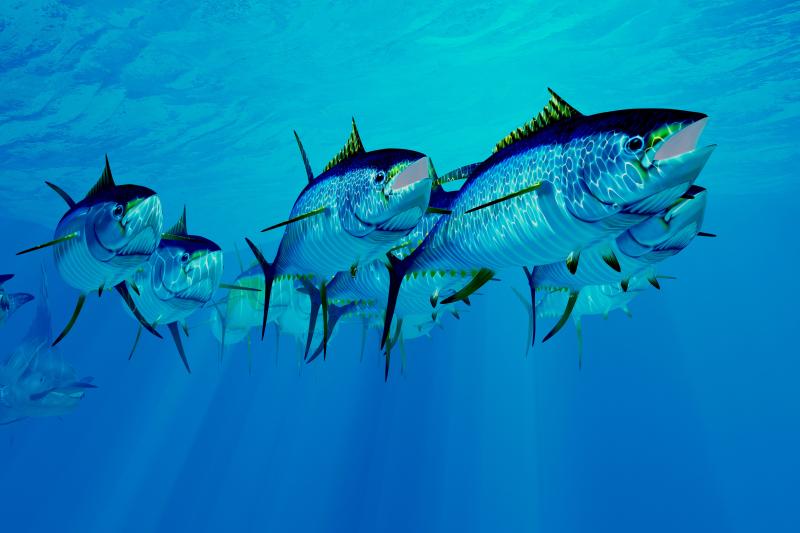Most U.S. fish stocks are not overfished, NOAA reports

"In 2021, U.S. fisheries held steady with more than 90 percent of stocks not subject to overfishing, and 80 percent not overfished." That's the latest from the annual Status of Stocks report issued in May by National Oceanic and Atmospheric Association, better known as NOAA.
“NOAA’s annual Status of Stocks report shows that the United States continues to be a global leader in sustainable fisheries management, as we work to understand how climate change is affecting fisheries and the communities that this sector supports,” said Dr. Rick Spinrad, NOAA Administrator.
“The report demonstrates that we remain on track to maximize marine fishing opportunities while ensuring long-term ecological and economic sustainability in our changing world.”
While the 2021 report offered good news for fisheries in federal waters, some stocks in those waters still concern scientists. Off the South Atlantic Coast, which includes North Carolina, hogfish, red snapper, red porgy, snowy grouper, gag grouper and red grouper are listed as overfished. In the Mid-Atlantic, which dips down to Cape Hatteras, bluefish and king mackerel are listed as overfished.
Read the 2021 Status of Stocks report
How federal fisheries are managed
"The Magnuson-Stevens Fishery Conservation and Management Act (MSA) is the primary law that governs marine fisheries management in federal waters, and under this law the United States is an international leader in fisheries management," the 2021 Status of Stocks reports.
When Congress passed MSA in 1976, it extended the U.S. jurisdiction of fisheries out to 200 miles and created eight regional fishery management councils. The councils develop fishery management plans needed to manage fishery resources within the 200-mile zone.
North Carolina falls under the South Atlantic Fishery Management Council. Each state represented by the council has voting members who serve three-year terms.
Meet N.C. members on the South Atlantic Council
Coastal population growth, climate change harm fisheries
The annual Status of Stocks reports “also reflect the responsibility we have to understand and mitigate the impacts of climate change on our coastal and marine resources, all while trying to build healthier and more resilient ecosystems,” said Assistant Administrator for NOAA Fisheries and NOAA’s Acting Assistant Secretary for Oceans and Atmosphere, Janet Coit.
NOAA continues to monitor climate change impacts on fisheries, including releasing in 2021 its first ecosystem status report for the South Atlantic Region. That report documents environmental changes in the South Atlantic and found the region's marine ecosystem is showing signs of chronic stress and changing ocean conditions, in addition to pressure from a growing coastal population.
How climate change is affecting the seafood you eat
"Agriculture and urban activities are leading to increases in nutrient inputs to coastal ecosystems. Between 2002 and 2012, nitrogen and phosphorus runoff into coastal waters of the South Atlantic increased, on average, 22 and 20 percent, respectively. Increased nutrient loads are an important driver of harmful algal blooms and hypoxia (oxygen depletion) that have negative effects on marine ecosystems and marine life," the report found.
Those negative effects include fish kills and loss of shellfish beds.





